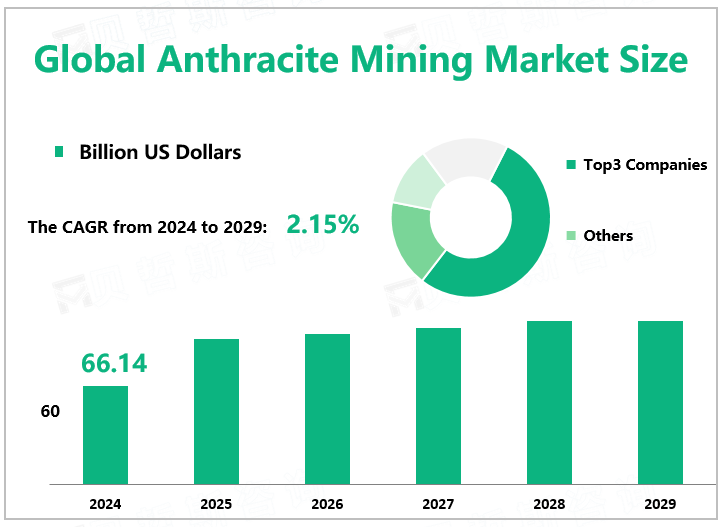Global Anthracite Mining Market Overview
According to Global Market Monitor, the global anthracite mining market size will reach $66.14 billion in 2024 with a CAGR of 2.15% from 2024 to 2029.
Anthracite has the characteristics of high fixed carbon content, low volatile and low sulfur content, and is an important fuel and raw material for industrial production and civil fields. Because of its high calorific value, low pollution, and other characteristics, anthracite has a wide range of applications in steel, chemical, electric power, and other industries. In recent years, with the improvement of environmental protection requirements and the adjustment of energy structure, the market demand for anthracite has shown a steady growth trend.
The Demand for Anthracite Will Continue to Increase.
According to the World Steel Association, about 89% of a Blast Furnace (BF)-Basic Oxygen Furnace(BOF) energy input comes from anthracite, 7% from electricity, 3% from natural gas, and 1% from other gases and sources. In the case of the Electric Arc Furnace(EAF) route, the energy input from anthracite accounts for 11%, from electricity 50%, from natural gas 38%, and 1% from other sources. The increasing use of anthracite in the construction, industrial, and infrastructure sectors is a key factor influencing the growth of the mining anthracite market. In addition, the substantial growth of anthracite consumption in the steel industry has also boosted the mining anthracite market. Because the carbon content of anthracite is similar to coke and the price is lower, steel producers use anthracite more frequently than coke. This could lead to more cost-effective steel production, driving demand for anthracite mining.

Market Drivers and Limitations
In recent years, environmental pollution and destruction have attracted the attention of all countries in the world, and the world is paying attention to environmental protection. However, coal mining will lead to the destruction of land resources and the deterioration of the ecological environment, which will destroy groundwater resources, increase the water supply shortage in water-scarce areas, and lead to exhaust emissions, endangering the atmospheric environment. Anthracite has a high fixed carbon content, low volatile yield, high density, and high hardness, and it is not easy to produce unburned carbon particles during combustion and has high thermal efficiency. Anthracite is widely used for heating residential and commercial buildings and manual furnaces. As a result of economic growth and an increase in population and infrastructure, fuel and power generation projects are increasing in rapidly growing countries such as China and India, so the demand for anthracite will continue to increase.
In the process of anthracite mining, if you do not pay attention, it is prone to land subsidence, gas explosion, engineering explosion, poisoning, and suffocation. Due to the different burial depths of coal resources, the corresponding mining methods (deep burial) and open pit mining (slight burial) are generally adopted. The amount of open-pit mining resources is relatively small in the total resources, so large-scale mechanization operations cannot be realized, and equipment costs and labor costs are relatively high. Mining is a high-risk job that emits harmful gases. Additionally,anthracite coal mines are prone to roof sags, explosions, mine fires, and mine collapses. The characteristics of coal and the underground atmosphere may cause many types of natural accidents, such as "biogas" and "fire moisture."
|
Drivers |
Increase in demand |
|
Widely applicable |
|
|
The high degree of coalification |
|
|
Limitations |
Not environmentally friendly |
|
Mining process safety issues |
|
|
Equipment and labor costs |
We provide more professional and intelligent market reports to complement your business decisions.